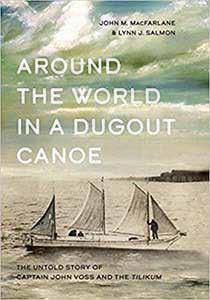FYP TEXTS
1922: “PUZZLED, BORED, IRRITATED, & DISILLUSIONED” by Dr. Thomas Curran
DO YOU KNOW MARK TWAIN’S definition of a classic? “A book which everyone wants to have read—but nobody wants to read.” I am absolutely obsessed with a weekly (English) Guardian column entitled: “Books that made me” which has been running since September 2017—so, of course, all the past columns are online. I have become so obsessed (actually: addicted) with this regular Guardian feature that—even during the lock-downs—I had to try to limit myself to the one new column each week, and, only if I had dealt with the most pressing of my duties, could I allow myself to peek at a past exemplar—but, then strictly, only one additional column a week. The questions that are put to contemporary and living authors in this Guardian feature is which book they are most “ashamed not to have read”—sometimes this also appears in the form of: “The book I couldn’t finish?” From my informal poll of over half the published columns, I have ascertained that James Joyce’s Ulysses (1922) is by far and away that work of literature that Guardian authors have either never managed to begin or then to finish. Moby-Dick is a distinct second (“leave that whale alone”), but
* 36
Melville is not mentioned nearly as often by the penitent sinners. If there were ever a use for Mark Twain’s dictum, it must be here. In the same vein, W.H. Auden apparently gave a lecture on Cervantes’ Don Quixote in which he informed his audience that he had never actually managed to finish this great (and massive) early novel, and he doubted if there might be anyone in the audience who had finished it either. The Guardian authors tend to be a bit more respectful of Ulysses than of Moby-Dick (1851). The general tone for Herman Melville is this: the authors hope that Captain Ahab finally completes his encounter with the whale, because along the way the readers have become entirely wearied by the Captain’s tedious obsession. This January (2021) there was a slight flurry of James Joyce celebration because the eminent author died in January 80 years ago (January 13, 1941). James Joyce festivities are bound to ramp up soonish, since in 2022, we shall be commemorating 100 years since the publication of two of the most famous/notorious/admired/over-hyped statements—take your pick—of “Modernism” in the English language, viz. James Joyce’s Ulysses and T.S. Eliot’s epic poem
A marvellous FYP initiative for this Zoom/COVID academic year has been the nightly performance of “Read Now!” in which the subject of the next morning’s lecture is introduced by a reading aloud from the assigned text. On Sunday evening, March 7th, two of the chief architects of “Read Now!” (FYP’s Susan Dodd and Neil Robertson) were engaged in a Zoom recitation of the entirety of Eliot’s epic The Waste Land—a very moving and special treat for all involved.
TIDINGS | WINTER 2021
The Waste Land—both first printed in 1922. There is something quite instructive in the way these two poems were received by another colossus of English-language Modernism, Virginia Woolf—whom we are now reading in the Foundation Year Program, with the same regularity as Eliot’s (mostly admired) masterpiece. This academic year (2020-21) Woolf ’s novel Mrs Dalloway (1925) is the required reading. There is critical opinion that features of Woolf ’s 1925 novel (first mentioned in Woolf ’s diary in August 1922) contain evidence of the putative influence of Eliot’s earlier completed monumental poem. The Woolfs (Virginia and Leonard) were profoundly charmed by Eliot: they published Eliot’s poetry (1919), found an apartment for him, and they were engaged in setting up a patronage fund to support Eliot’s poetic ambitions. But most remarkably, Virginia Woolf took a direct hand in preparing the publication of The Waste Land—since the initial typesetting had been so incompetent. The early exposure to the then still unpublished The Waste Land was positive: Virginia Woolf recorded that Eliot read his poem to them: “He sang it & chanted it [&] rhythmed it. It has great beauty & force of phrase: symmetry; & tensity.” Presumably Virginia Woolf has also summarized the reaction of many of us in our first encounters with the poem: “What connects it together, I’m not so sure…” That was in June of 1922; in that October, she defended Eliot in a letter: “I have only the sound of it in my ears, when he read it aloud; and have not yet tackled the sense. But I like the sound.”*







